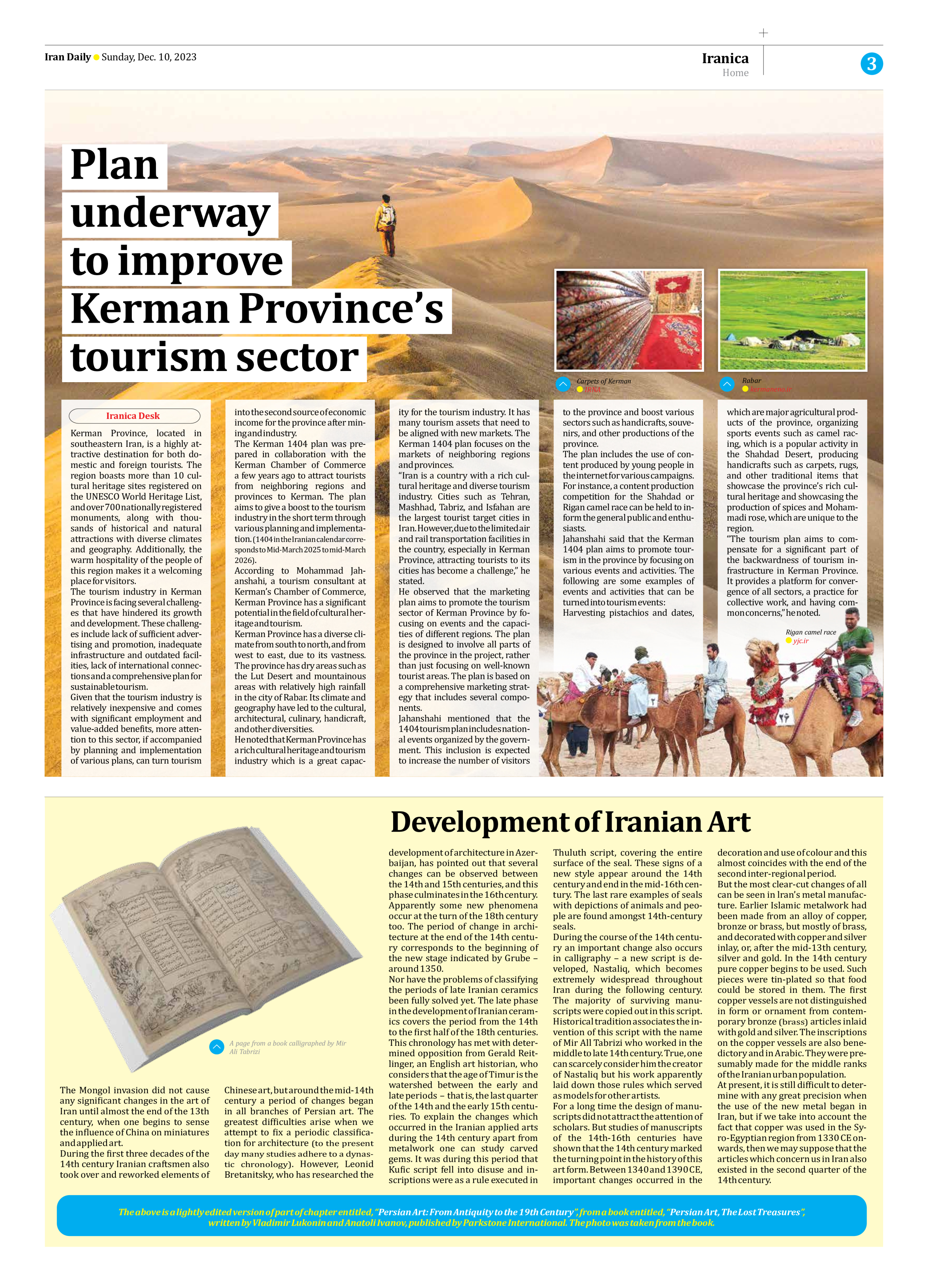
Development of Iranian Art
The Mongol invasion did not cause any significant changes in the art of Iran until almost the end of the 13th century, when one begins to sense the influence of China on miniatures and applied art.
During the first three decades of the 14th century Iranian craftsmen also took over and reworked elements of Chinese art, but around the mid-14th century a period of changes began in all branches of Persian art. The greatest difficulties arise when we attempt to fix a periodic classification for architecture (to the present day many studies adhere to a dynastic chronology). However, Leonid Bretanitsky, who has researched the development of architecture in Azerbaijan, has pointed out that several changes can be observed between the 14th and 15th centuries, and this phase culminates in the 16th century.
Apparently some new phenomena occur at the turn of the 18th century too. The period of change in architecture at the end of the 14th century corresponds to the beginning of the new stage indicated by Grube – around 1350.
Nor have the problems of classifying the periods of late Iranian ceramics been fully solved yet. The late phase in the development of Iranian ceramics covers the period from the 14th to the first half of the 18th centuries. This chronology has met with determined opposition from Gerald Reitlinger, an English art historian, who considers that the age of Timur is the watershed between the early and late periods – that is, the last quarter of the 14th and the early 15th centuries. To explain the changes which occurred in the Iranian applied arts during the 14th century apart from metalwork one can study carved gems. It was during this period that Kufic script fell into disuse and inscriptions were as a rule executed in Thuluth script, covering the entire surface of the seal. These signs of a new style appear around the 14th century and end in the mid-16th century. The last rare examples of seals with depictions of animals and people are found amongst 14th-century seals.
During the course of the 14th century an important change also occurs in calligraphy – a new script is developed, Nastaliq, which becomes extremely widespread throughout Iran during the following century. The majority of surviving manuscripts were copied out in this script. Historical tradition associates the invention of this script with the name of Mir All Tabrizi who worked in the middle to late 14th century. True, one can scarcely consider him the creator of Nastaliq but his work apparently laid down those rules which served as models for other artists.
For a long time the design of manuscripts did not attract the attention of scholars. But studies of manuscripts of the 14th-16th centuries have shown that the 14th century marked the turning point in the history of this art form. Between 1340 and 1390 CE, important changes occurred in the decoration and use of colour and this almost coincides with the end of the second inter-regional period.
But the most clear-cut changes of all can be seen in lran’s metal manufacture. Earlier Islamic metalwork had been made from an alloy of copper, bronze or brass, but mostly of brass, and decorated with copper and silver inlay, or, after the mid-13th century, silver and gold. In the 14th century pure copper begins to be used. Such pieces were tin-plated so that food could be stored in them. The first copper vessels are not distinguished in form or ornament from contemporary bronze (brass) articles inlaid with gold and silver. The inscriptions on the copper vessels are also benedictory and in Arabic. They were presumably made for the middle ranks of the Iranian urban population.
At present, it is still difficult to determine with any great precision when the use of the new metal began in Iran, but if we take into account the fact that copper was used in the Syro-Egyptian region from 1330 CE onwards, then we may suppose that the articles which concern us in Iran also existed in the second quarter of the 14th century.
The above is a lightly edited version of part of chapter entitled, “Persian Art: From Antiquity to the 19th Century”, from a book entitled, “Persian Art, The Lost Treasures”,
written by Vladimir Lukonin and Anatoli Ivanov, published by Parkstone International. The photo was taken from the book.







